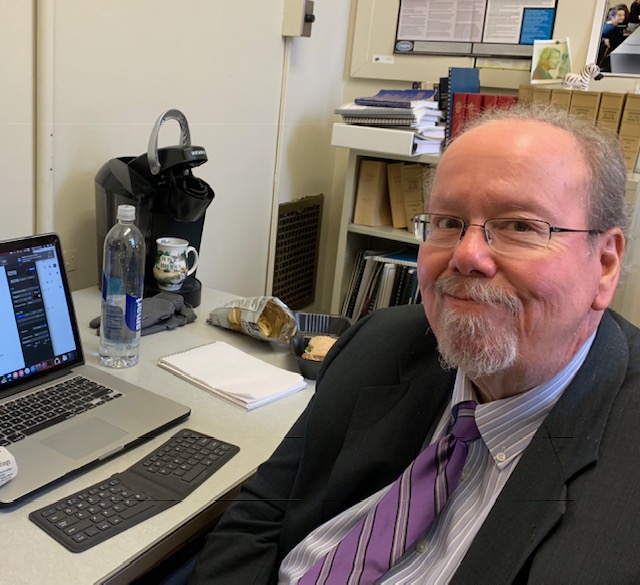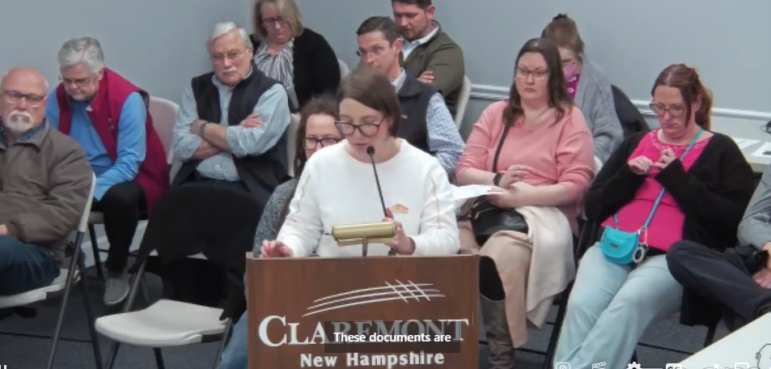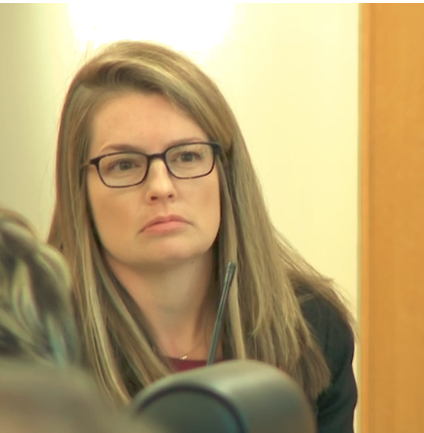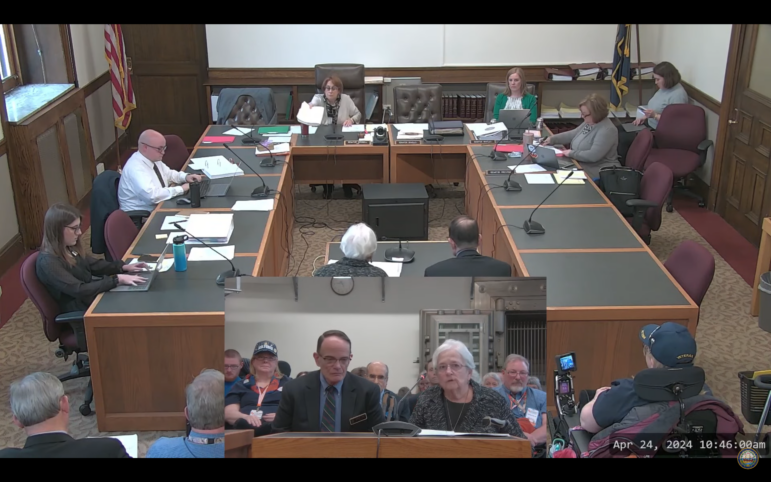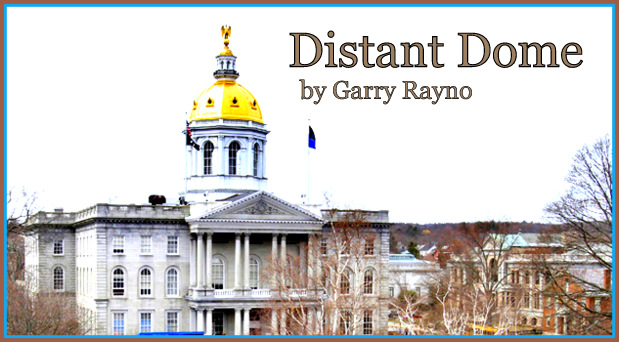
By GARRY RAYNO, Distant Dome
CONCORD – There are Christmas trees and there are Christmas trees, but one of the biggest legislative Christmas trees in some time comes from Gov. Chris Sununu’s office in the form of House Bill 2.
House Bill 2, or the trailer bill, contains the changes in law needed to make the numbers — which are in House Bill 1 — work.
Together they make up the budget package that governs expenditures and revenues for the next biennium – or two fiscal years.
The trailer bill has always been “the last chopper out of Saigon” with every pet project and issue hung on it, meaning it is much more than the mere changes in law needed for the budget.
Over the years changes to the state retirement system, changes in tax law and Medicaid reimbursement rates, as well as many pet projects – or carve outs for powerful lawmakers – have been in trailer bills.
HB 2 published last week is more than a Christmas tree and is instead a kid in a candy store with a cash-filled wallet.
The bill includes more than $160 million in projects – big and small – ranging from $40 million for a new mental health facility to $30,000 for energy efficiency upgrades to the Claremont Visitors Center, and $10 million for the “victims” of the Financial Resource Mortgages scandal that was settled years ago.
Many of the projects will address real needs such as a new Secure Psychiatric Unit to replace the controversial facility at the state prison for men in Concord and a new Early Childhood Development Center at the University of New Hampshire.
However, traditionally lawmakers have a say in capital projects while this is essentially an end run around the House Public Works and Highways Committee and the Senate Capital Budget Committee.
The usual place for capital projects is in the two-year capital budget or what is traditionally House Bill 25, which is now before the House Public Works Committee. Sununu’s proposed capital budget maxed out the state’s bonding capacity at about $120 million, so the projects in HB 2 are one-time expenditures, which is the point if you are the governor.
According to budget information the governor’s office distributed after his budget address last month, the state had a $96 million surplus at the end of fiscal year 2018, and has a projected $98.4 million surplus this fiscal year, which ends June 30. About $63 million of the surplus is in the Education Trust Fund, and Sununu is proposing creating a $63 million fund to pay for public school construction projects tilted toward property-poor school districts.
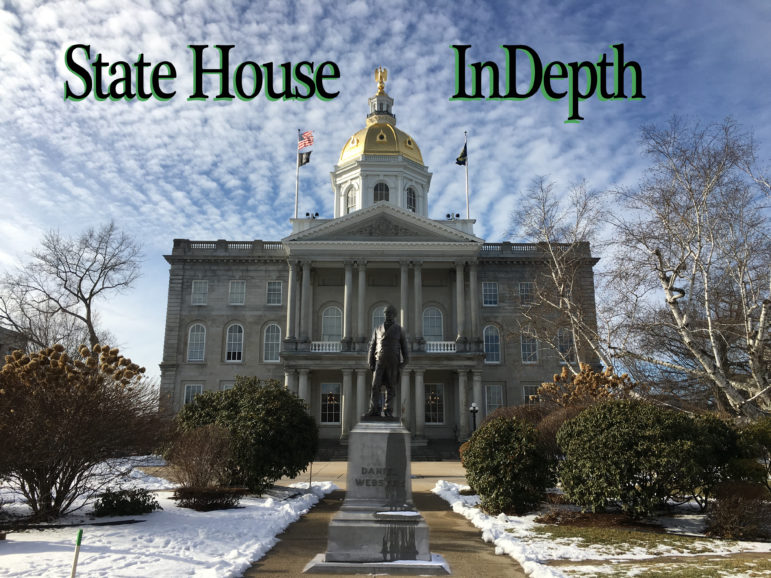
Sununu is also proposing doing away with the separate Education Fund established 20 years ago as part of the overhaul of the education funding system to address the Supreme Court’s Claremont decisions.
HB 2 uses surpluses from the current biennium which ends June 30 and the next biennium to fund the Capital Infrastructure Revitalization Fund after $27.3 million is put into the state’s Rainy Day Fund, bringing the total to $137.3 million at the end of the next biennium, the highest total ever in the state’s savings account.
The capital infrastructure funds would be distributed this fiscal year and during the next biennium.
Health and Human Services
The Health and Human Services Department receives a significant share of the more than $160 million, much of it to address issues like the lack of affordable housing raised in the state’s new 10-year Mental Health Plan, the 40 to 50 people a day who reside in hospital emergency rooms with acute mental health issues until a space opens at the New Hampshire Hospital or a regional residential mental health facility, and lowering the developmentally disabled wait list of patients moving off school district rolls and onto the state’s once they reach 21 years old.
There is also $10 million over two years for continued work on the long-troubled Medicaid management information system that has been way over budget and long past its deadline after it was proposed around 2005.
Sununu proposes spending $3 million to entice hospitals to help with the emergency room waits, and about $10 million for moving juveniles from New Hampshire Hospital to their own facility and converting the space at state hospital to adult beds.
Sununu also intends to use $1.2 million of the surplus money to study pediatric cancer rates in the Seacoast area.
With all of the building projects for HHS, the governor did not include money to staff or operate the new facilities. That may be fine for the large projects, but smaller ones may be finished before the next biennium ends but won’t have staff unless budget adjustments are made through the Fiscal Committee or supplemental appropriations.
University and community college systems
While Sununu’s proposed operating budget would flat fund state aid to the University System of New Hampshire at $81 million a year, which would be seven years without an increase and would probably guarantee tuition hikes, he proposes giving $24 million in HB 2 spread across the three major campuses — Durham, Plymouth and Keene – for programs that include nursing, advanced manufacturing and robotics.
And he proposes $6 million at the University of New Hampshire to build a new Early Childhood Development Center.
The community college system received a small increase in state aid in Sununu’s proposed operating budget, but about $8 million in HB 2 for technology upgrades to allow more on-line classes and for the Pathways Program.
Financial Resources Mortgage
There is $10 million over two years to reimburse people who lost money in the Financial Resources Mortgage Ponzi scheme run by Scott Farrah. The scheme cost investors about $20 million after a financial accounting was done and payouts retrieved.
While lawmakers have introduced bills for the state to make restitution to those harmed by the Laconia-based company, including this year, nothing has been approved.
The prevailing thought has been “if the return looks too good to be true, then it probably is.”
Earmarks
While those are examples of the big ticket items in HB 2, smaller amounts of money are given to a couple dozen communities for specific projects.
For example the demolition of state highway maintenance buildings along Stickney Avenue in Concord is funded with $620,000 in surplus funds. Concord has long sought to have what it considers an eye sore removed from one of its gateway locations.
The greater Salem Boys and Girls Clubs would receive an $100,000 earmark, while Conway would benefit from $450,000 to tear down six buildings on state land purchased for the never built Conway bypass and $300,000 to replace a traffic light at the Route 302 E. Conway Road intersection.
Laconia would receive $1.5 million to renovate the bottom floor of its downtown parking garage and $80,000 to repair its skate park.
Franklin would benefit from $1.5 million to renovate Whitewater Park, while Claremont would receive $120,000 for sidewalks and drainage and $100,000 for energy efficiency measure at Arrowhead Lodge.
Newport would receive $200,000 to renovate a middle school classroom and $80,000 for an alarm panel, and Sandown Elementary School would receive $590,000 for a solar project.
And under HB 2, cities and towns would be able to access a $3 million fund to build new bicycle trails, but the money could not be used for land purchases or to maintain existing trails.
When Sununu’s budget director was asked by House budget writers how the projects were chosen, his budget director said the governor learned their need traveling around the state.
The budget writers are at work removing most of the the projects from HB 2.
Putting all the surplus money into one-time capital projects is an old budget trick to keep lawmakers from spending the money on new or expanded programs that may not be sustainable during a downturn when revenues fall short of projections.
Sununu’s father did the same thing when revenues were robust in the mid to late 1980s before everything went bust when many of the state’s banks collapsed after overextending themselves.
But because the current governor put the projects in HB 2, House and Senate budget writers and lawmakers will be blamed when they are eliminated or made to go through the normal capital budget process.
That is politics as usual.
Garry Rayno may be reached at garry.rayno@yahoo.com
Distant Dome by veteran journalist Garry Rayno explores a broader perspective on the State House and state happenings for InDepthNH.org. Over his three-decade career, Rayno covered the NH State House for the New Hampshire Union Leader and Foster’s Daily Democrat. During his career, his coverage spanned the news spectrum, from local planning, school and select boards, to national issues such as electric industry deregulation and Presidential primaries. Rayno lives with his wife Carolyn in New London. InDepthNH.org is New Hampshire’s only nonprofit, online news outlet dedicated to holding government accountable and giving voice to marginalized people, places and ideas.
